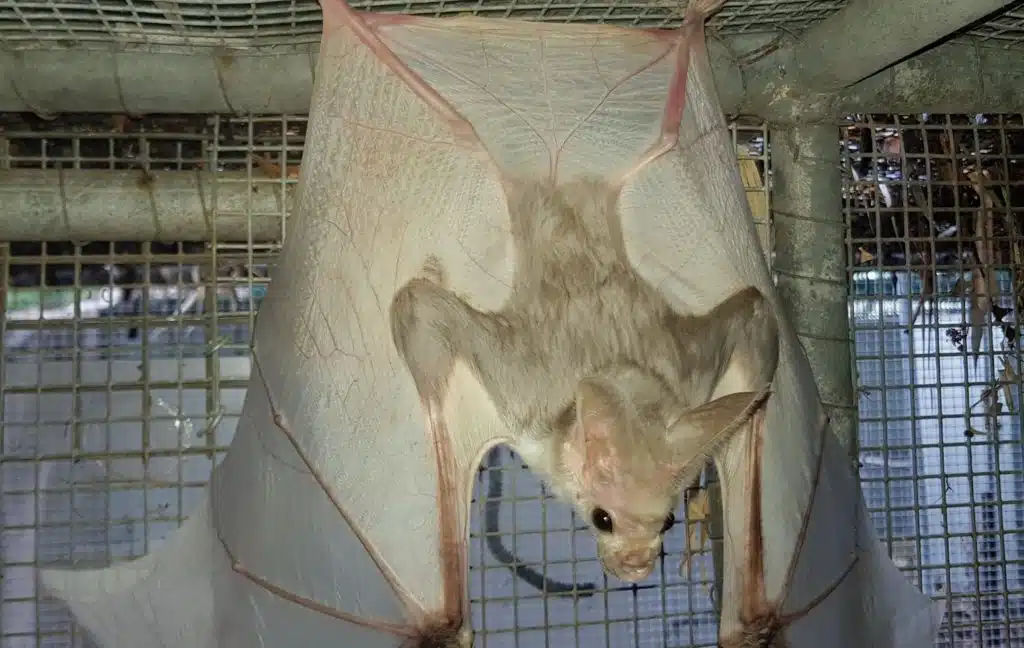Faecal pellets and food remains reveal what ghost bats eat in the Pilbara

Photos of 2019 Science in Public Event at the Brisbane Hotel in Perth. Photos Ross Swanborough.
UWA, Curtin university and Perth zoo researchers have discovered that Australian endangered ghost bats in the Pilbara (WA) eat over 46 different species.
Its diet is very diverse ranging from small mammals, birds, reptiles and amphibians.
Researchers used a new approach by combining two methodologies: DNA analysis of faecal pellets and classification of dried food remains.
Ghost bats are decreasing with less than 10,000 remaining in the wild. The results provide crucial information for the conservation management of this iconic Australian species and its habitat.
Ghost bats are the largest microbats in Australia and the second largest in the world with a wingspan of 60 cm and weight up to 170 grams.
They receive their name due to their pale grey colour and “ghostly” appearance. They are top-level predators and very important for the ecosystem.
Feature photo (Captive ghost bats at Perth Zoo) credit: Perth Zoo.
Media:


Further Reading:
- Arteaga Claramunt Alba M ., White Nicole E., Bunce Michael, O’Connell Morgan, Bullen Robert D., Mawson Peter R. (2019) Determination of the diet of the ghost bat (Macroderma gigas) in the Pilbara region of Western Australia from dried prey remains and DNA metabarcoding. Australian Journal of Zoology 66, 195 200. https://doi.org/10.1071/ZO18040
- 25th May 2016. Academic Conference. Reintroduction of Macroderma gigas into the wild. School of Animal Biology, University of Western Australia (UWA).The DOI of the journal is: https://doi.org/10.1071/ZO18040





 Fresh Science is on hold for 2022. We will be back in 2023.
Fresh Science is on hold for 2022. We will be back in 2023.